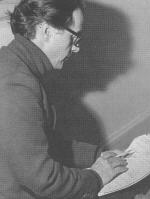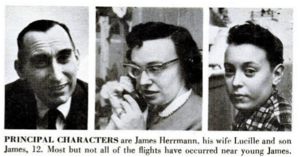William G. Roll facts for kids
Quick facts for kids
William G. Roll
|
|
|---|---|
 |
|
| Born | July 3, 1926 |
| Died | January 9, 2012 (aged 85) |
| Nationality | American |
| Alma mater |
|
| Occupation | Parapsychologist, writer |
| Relatives | William Roll (father) |
| Scientific career | |
| Institutions | University of West Georgia |
William G. Roll (born July 3, 1926 – died January 9, 2012) was an American psychologist and parapsychologist. A psychologist studies the human mind and behavior. A parapsychologist studies things that seem to be beyond normal science, like psychic abilities or ghosts. Roll taught at the University of West Georgia.
He was best known for his belief in poltergeist activity. Poltergeists are said to be invisible forces that move objects or make noises. Roll created the term "recurrent spontaneous psychokinesis" (RSPK) to explain poltergeist cases. Psychokinesis is the idea of moving objects with the mind. However, most scientists do not accept RSPK, and many people who study strange events (called skeptics) thought Roll was too quick to believe in these things.
Contents
Early Life and Education
William G. Roll was born in 1926 in Bremen, Germany. His father was an American diplomat. When he was three, his parents divorced, and he moved to Denmark with his mother. Roll later said that he started having out-of-body experiences at night while living in Denmark. This means he felt like his mind left his body.
In 1946, he moved to America with his father. Roll then went to the University of California, Berkeley, starting in 1947. He studied philosophy and psychology there and earned his bachelor's degree.
After Berkeley, he went to Oxford University in England. He spent eight years there doing research into parapsychology. During this time, he was the president of the Oxford University Society for Psychical Research. He wrote his master's thesis, which was later published as a book.
A Career in Parapsychology
William Roll, sometimes called Bill Roll, worked as a parapsychologist starting in the 1950s. He wrote many research papers and articles. He also wrote or helped write four books, including The Poltergeist (1972). He appeared on the TV show Unsolved Mysteries several times.
In 1957, J. B. Rhine, a famous parapsychologist, invited Roll to join his Parapsychology Laboratory at Duke University. Roll worked there until 1964. In 1964, he became the president of the Parapsychological Association.
In 1958, Roll came up with the term "recurrent spontaneous psychokinesis" (RSPK). He used this term in a paper he wrote with J. G. Pratt. They used it to describe their study of objects moving by themselves in a home in Seaford, New York. This happened around a 12-year-old boy.
In 1961, Roll became the project director of the Psychical Research Foundation (PRF). This group was connected to J. B. Rhine's lab.
Roll earned his PhD in psychology from Lund University in 1989. His PhD research looked into whether human personality might survive after death.
Later Years and Recognition
In the 1980s and 1990s, Roll held different jobs at the University of West Georgia. He was a professor of psychology and psychical research. He later retired from teaching but still taught a parapsychology course in 2007. He also kept writing and speaking at conferences.
Roll received awards for his work, including the Parapsychological Award for a Distinguished Career in Parapsychology in 1996.
His most famous case was the "Columbus Poltergeist" in 1984. Roll was the main investigator. A newspaper photographer took pictures that supposedly showed objects moving by themselves in the home of a teenager named Tina Resch in Columbus, Ohio.
William G. Roll passed away at age 85 in 2012 in Normal, Illinois. He lived in Georgia for many years with his wife. He was survived by his family.
The Seaford Poltergeist Case
In Seaford, New York, a family named Herrmann reported strange poltergeist events in their house. This happened in 1958. William Roll and another parapsychologist, Joseph Gaither Pratt, investigated the case.
They thought that some of the strange events might have been pranks by the Herrmanns' 12-year-old son, James Jr. However, they also suggested that some events were caused by "recurrent spontaneous psychokinesis" (RSPK). But as mentioned, mainstream science does not accept RSPK, and there is no proof that it exists.
Later, a skeptic named Joe Nickell looked at the case again. He believed that all the strange events could be explained by tricks played by James Jr. Nickell thought that Roll and Pratt were too quick to believe in supernatural explanations and did not understand how magic tricks work. Nickell concluded that the evidence strongly suggested James Jr. was behind the Seaford "poltergeist" outbreak.


